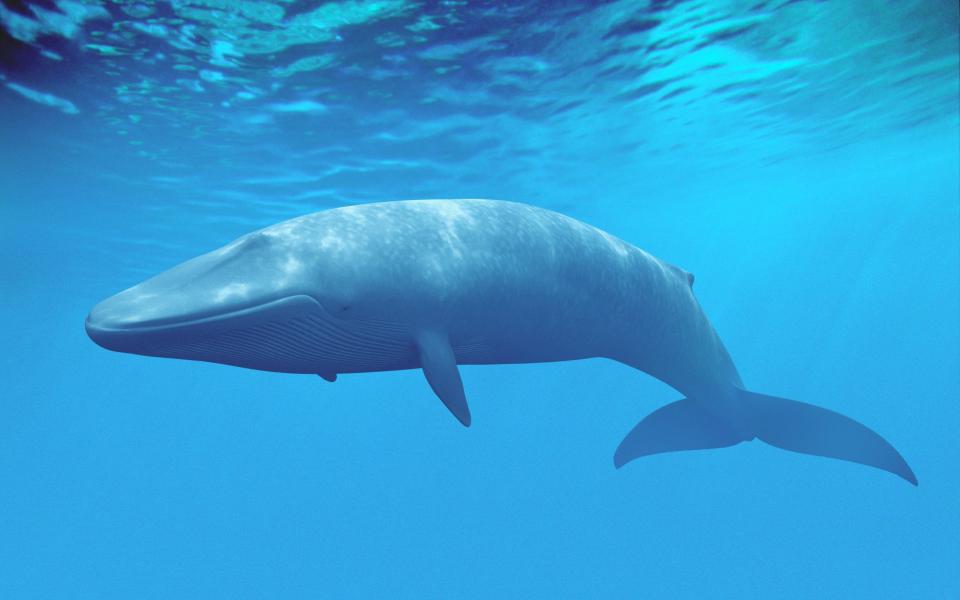A 40-million-year-old fossilized whale, previously thought to be the heaviest animal of all time, is now thought to be lighter than a blue whale.
The massive 17-metre-long whale, believed to have very dense bones, was initially thought to weigh 340 metric tonnes; This was equivalent to 150 cars piled on top of each other.
However, American scientists have now lowered its weight, saying that if it were as heavy as previously thought, it would not survive or even swim.
In a new study published in the journal PeerJ, the ancient animal was put back on the scales and weighed down to less than half the weight of the largest known blue whale.
The whale fossil skeleton, known as Perucetus colossus, was previously thought to be the heaviest animal to ever walk the Earth.
The first vertebrae of the marine giant were discovered more than a decade ago in Peru’s Ica River Valley.
It is estimated to have lived about 39 million years ago and belonged to an extinct group of early whales called Basilosaurids.
Scientists found that Perucetus’ bones were unusually dense.
Mammalian bones normally have a solid outer surface and a spongy or hollow center, but the center of the bones of some animals is filled with more solid bone, making the bones extremely dense and heavy.
In aquatic animals, heavy bones balance the buoyancy of body fat and blubber, allowing the animal to maintain neutral buoyancy in water or, in the case of the hippopotamus, to walk along riverbeds.
Perucetus bones were found to have both an extensive filling and extra bone growth on the outside; A condition called pachyostosis, which is also seen in some modern aquatic mammals such as manatees.
Based on a number of assumptions, scientists initially estimated that the whale’s body mass weighed approximately 180 metric tons, up to a maximum of 340 metric tons (more than 23 double-decker buses).
These estimates suggest that Perucetus weighed as much as or more than the largest blue whales ever known – although it was considerably shorter at only 17 meters long compared to blue whales, which can grow up to an incredible 33 meters (110 ft).
But a new study led by paleontologists at the University of California (UC) Davis and the Smithsonian Institution disputes these weights, insisting that such estimates would make Perucetus incredibly dense.


Prof Ryosuke Motani, a paleobiologist from UC Davis’s Department of Earth and Planetary Sciences, explained: “It would be one thing for the whale to remain on the surface, or even leave the seabed.
“To do anything in water, you would have to swim constantly against gravity.”
Dr Motani, together with Dr Nick Pyenson from the Smithsonian Institution’s National Museum of Natural History, re-examined the assumptions used to make these estimates to find the giant’s own revised weight.
The first problem they identified in previous weighings was that they used fossil bones to estimate the weight of the skeleton and extrapolated it to the weight of the whole animal, assuming that mass with and without skeletons would increase at the same rate. With increasing body size.
However, Dr Motani and Dr Pyenson argue that measurements in other animals show this is not the case.
Therefore, they believe that the original estimates overestimated how much body mass increased as a result of pachyostosis, a condition involving the thickening of bones.
Evidence from manatees, for example, shows that their bodies are relatively light relative to their skeletal mass.


Researchers now estimate that the 17-metre-long Perucetus actually weighed between 60 and 70 tonnes.
Growing to 20 metres, a Perucetus could weigh more than 110 tonnes, according to new estimates, but it’s still well short of the 270 tonnes of the largest blue whale.
“The new weight allows the whale to rise to the surface and remain there while breathing and recovering from the dive,” Dr Motani said.
Paleontologists have yet to uncover the skull or teeth of a Perucetus, so it’s difficult to grasp what they ate.
It takes a lot of food to sustain a huge body, and previous researchers from Italy suggested that Perucetus, like some sharks, feasted on coastal fish and shellfish or by scavenging on carrion.
The new reduced size estimate places Perucetus in a similar weight range as sperm whales, which are 80 tonnes and 20 meters long, hunting large prey such as giant squid.